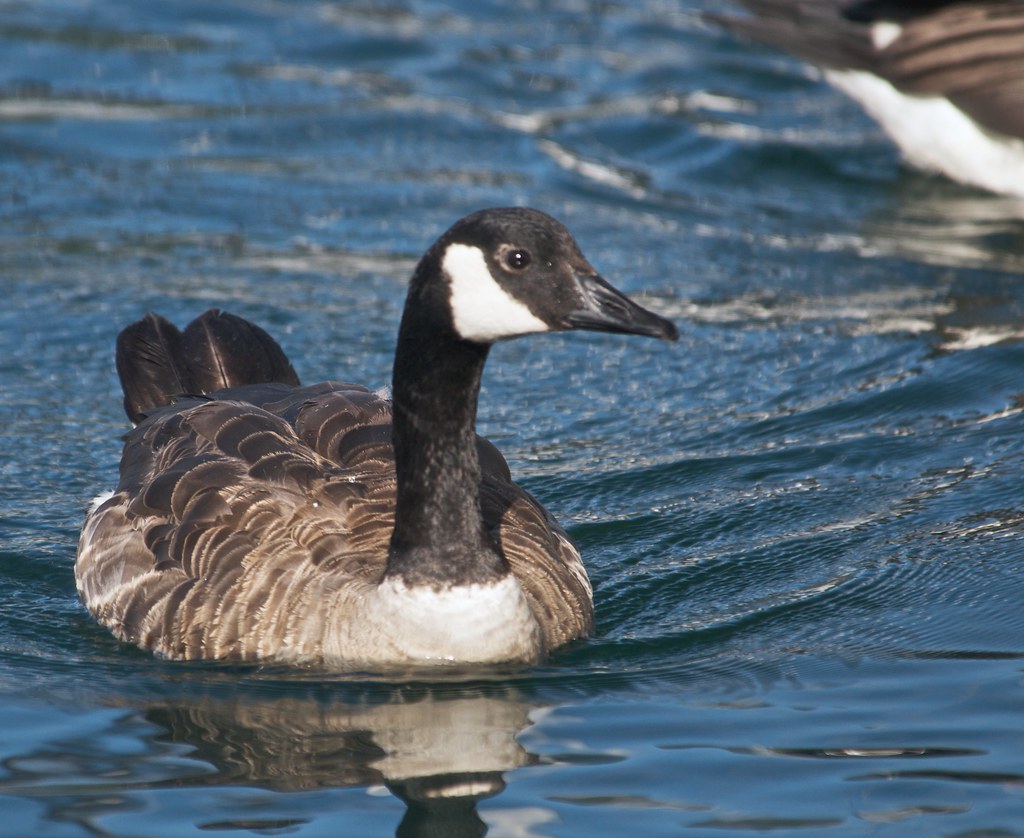SCORES & OUTDOORS: Canada geese make their presence known
 by Roland D. Hallee
by Roland D. Hallee
Sometime between 5 and 5:30 a.m., a few weeks ago, I was unceremoniously reminded the season on Canada geese had begun in Maine. It’s rather startling when you’re awakened from a sound sleep with the clapping of gun fire. For a second, I thought I was back in Vietnam. There was either a lot of hunters, or they were bad shots.
Hunters had positioned themselves in a cove just below from where our camp is located and the rapport from the shotguns sounded like it was right under our bedroom window.
The Canada goose is a wild goose which is native to arctic and temperate regions of North America, having a black head and neck, white patches on the face, and brownish-gray body. (For your edification, the proper name of the bird is Canada Geese, and not Canadian Geese.)
The black head and neck with the white “chinstrap” distinguishes the Canada goose from all other species of goose. They are generally 30 – 43 inches long with a 50 to 71-inch wingspan. The male usually weighs 7 – 14 pounds, and can be very aggressive in defending its territory. The female looks virtually identical to the male but only smaller, and has a different “honk.”
The species, native to North America, breeds in Canada and the northern United States in a variety of habitats. Its nest is usually located in an elevated area near water such as streams, lakes, ponds and sometimes on a beaver lodge. Its eggs are laid in a shallow depression lined with plant material and down.
By the early 20th century, over-hunting and loss of habitat in the late 19th century and early 20th century had resulted in a serious decline in the numbers of this bird in its native range. The Giant Canada goose subspecies was believed to be extinct in the 1950s, until, in 1962, a small flock was discovered wintering in Rochester, Minnesota. With improved game laws and habitat recreation and preservation programs, their populations have recovered in most of their range.
In recent years, Canada goose populations in some areas have grown substantially, so much so that many consider them pests (for their droppings, the bacteria in their droppings, noise and confrontational behavior). They have a tendency to attack humans when they feel themselves or their goslings to be threatened. First, the goose will stand erect, spread its wings and produce a hissing sound. Next, the goose will charge. They will either bite or attack with their wings.
The problem is partially due to the removal of natural predators and an abundance of safe, man-made bodies of water (such as golf courses, public parks and beaches, and in planned communities).
Like most geese, the Canada goose is naturally migratory with the wintering range being most of the United States. Although a migratory bird, some flocks in Canada choose not to migrate, even during the winter, if food (such as human leftovers) is constantly available throughout the season.
The calls overhead from large groups of Canada geese flying in V-shaped formation signal the transitions into spring and autumn.
By the way, should you see Canada geese flying north this time of year, it doesn’t signal early spring. Some will winter in this area, fly down the Kennebec River, looking for food, then fly back north to their nesting site.
Canada geese, Branta canadensis, are primarily herbivores, although they sometimes eat small insects and fish. Their diet includes green vegetation and grains, such as wheat, beans, rice and corn. When in the water, they feed from silt on the bottom, and aquatic plants such as seaweeds. In urban areas, they are also known to pick food out of garbage bins.
Properly prepared, the meat of Canada geese is very tasty. I had some once at a wild game dinner, and, after being awarkened in the early-morning hours by those hunters, I sure wouldn’t mind having one on my dinner plate.
Roland’s trivia question of the week:
Who is the all time leader in career touchdowns for the New England Patriots?
Responsible journalism is hard work!
It is also expensive!
If you enjoy reading The Town Line and the good news we bring you each week, would you consider a donation to help us continue the work we’re doing?
The Town Line is a 501(c)(3) nonprofit private foundation, and all donations are tax deductible under the Internal Revenue Service code.
To help, please visit our online donation page or mail a check payable to The Town Line, PO Box 89, South China, ME 04358. Your contribution is appreciated!



Leave a Reply
Want to join the discussion?Feel free to contribute!